Do you have a question about the Spirax Sarco 600 Series and is the answer not in the manual?
Ensure safe access and working platform before working on the product.
Ensure adequate lighting, particularly where detailed or intricate work is required.
Consider potential hazards from pipeline contents like flammable materials or health risks.
Consider explosion risk areas, lack of oxygen, dangerous gases, temperature extremes.
Consider effects of work on the entire system and other workers.
Ensure pressure isolation and safety venting to atmospheric pressure.
Allow time for temperature to normalize to avoid burns.
Use suitable tools and genuine Spirax Sarco replacement parts.
Consider protective clothing for hazards like chemicals, temperature, noise, falling objects.
Ensure work is supervised by competent person; comply with permit systems.
Study wiring diagrams and instructions before starting electrical work.
Ensure system is fully functioning after installation or maintenance.
Dispose of unwanted equipment in a safe manner.
Provide hazard information for returned products due to contamination or damage.
Mount instrument into a panel cut-out and secure with fixing plates.
Use a steel section fixed on wall or a pipe stand for mounting.
Connections for air supply, outlet, integral action, and transmitters.
1/4" NPT female for pressure; refer to bulletin for temperature sensing.
Air must be pure and dry. Supply at 20 psi (1.4 bar) constant pressure.
Use non-ferrous materials like nylon or copper to prevent rust.
Line should slope down to prevent condensate draining into the instrument.
Air pressure must be at least 2.8-3 bar for filter-regulator to operate correctly.
Signal is 3-15 psi. Line must be airtight to ensure correct control action.
Clean process pipework before installing valve to prevent dirt entry.
Use isolating valves and a by-pass valve for maintenance.
Connect auto-manual station to integral action port, plug if not used.
Perform a preliminary check after transport to ensure calibration.
Action (direct/reverse) can be changed by positioning the proportional band adjusting device.
Switch auto-manual station to automatic operation.
Supply instrument with 20 psi air and drain filter regulator.
Ensure no air leakages in the pneumatic piping to control valve.
Use knob (F) to position red pointer (G) on the desired set point.
Set proportional band to 20% and verify control action is correct.
Ensure by-pass valve is closed if fitted, and isolating valve is open.
Gradually increase proportional band to prevent oscillations, then fine-tune for stability.
Simulate disturbance to test proportional band stability.
Adjust manual reset screw (H) to correct pointer offset.
Switch auto-manual station to manual control.
Close pneumatic control valve by turning the pressure regulator knob.
Ensure isolating valves are open and by-pass valve is closed.
Gradually open valve until black pointer matches red set point pointer.
Switch auto-manual station to automatic control.
Adjust integral action screw (I) to set automatic reset index.
Ensure by-pass is shut, isolating valves open.
Increase proportional band to prevent cycling, adjust integral action if needed.
Increase integral action speed to a maximum acceptable level without cycling.
Simulate disturbance to optimize band and integral action for stability.
Supply 20 psi air, set red pointer to match black pointer.
Set proportional band index on the line separating direct/reverse action.
Check outlet signal is 9 psi; adjust plaque if necessary.
Adjust proportional band to 10% direct/reverse action and check signal remains at 9 psi.
Adjust signal deviation from 9 psi using screw (H) if necessary.
Set band to 10% direct action, verify signal is 9 psi.
Adjust flapper nut (N.12) to eliminate algebraic sum of errors.
Tightening flapper nut decreases control signal.
Re-check items 3, 4, 5, 6 after flapper adjustment.
Remove threaded plug from PI controller reset screw (H) before setting.
Set proportional band for 9 psi output, then set integral action screw to 0 rep./min.
Daily drain filter to remove water, oil, and impurities.
Clean amplifying relay, paying attention to capillary orifice.
Keep pneumatic control valve in good working condition to avoid friction.
Clean pneumatic nozzle by blowing clean air and keeping flapper plate away.
Clean diaphragm and inner parts of pneumatic relay due to oil/condensate.
Instructions for disassembling and reassembling the pneumatic relay.
Check air supply, action direction, orifice, valve diaphragm, and piping.
Check nozzle, orifice gasket for dirt or leaks.
Adjust proportional band, integral action speed, or clean capillary orifice.
Adjust manual reset or clean integral action valve.
Adjust band/integral action, check valve friction or oversizing.
Steps to replace the measuring element, followed by control and calibration.
Verify instrument indicated value matches real value at a single point.
Verify correspondence of indicated value to real value at two points (zero and 100%).
Ensure safe access and working platform before working on the product.
Ensure adequate lighting, particularly where detailed or intricate work is required.
Consider potential hazards from pipeline contents like flammable materials or health risks.
Consider explosion risk areas, lack of oxygen, dangerous gases, temperature extremes.
Consider effects of work on the entire system and other workers.
Ensure pressure isolation and safety venting to atmospheric pressure.
Allow time for temperature to normalize to avoid burns.
Use suitable tools and genuine Spirax Sarco replacement parts.
Consider protective clothing for hazards like chemicals, temperature, noise, falling objects.
Ensure work is supervised by competent person; comply with permit systems.
Study wiring diagrams and instructions before starting electrical work.
Ensure system is fully functioning after installation or maintenance.
Dispose of unwanted equipment in a safe manner.
Provide hazard information for returned products due to contamination or damage.
Mount instrument into a panel cut-out and secure with fixing plates.
Use a steel section fixed on wall or a pipe stand for mounting.
Connections for air supply, outlet, integral action, and transmitters.
1/4" NPT female for pressure; refer to bulletin for temperature sensing.
Air must be pure and dry. Supply at 20 psi (1.4 bar) constant pressure.
Use non-ferrous materials like nylon or copper to prevent rust.
Line should slope down to prevent condensate draining into the instrument.
Air pressure must be at least 2.8-3 bar for filter-regulator to operate correctly.
Signal is 3-15 psi. Line must be airtight to ensure correct control action.
Clean process pipework before installing valve to prevent dirt entry.
Use isolating valves and a by-pass valve for maintenance.
Connect auto-manual station to integral action port, plug if not used.
Perform a preliminary check after transport to ensure calibration.
Action (direct/reverse) can be changed by positioning the proportional band adjusting device.
Switch auto-manual station to automatic operation.
Supply instrument with 20 psi air and drain filter regulator.
Ensure no air leakages in the pneumatic piping to control valve.
Use knob (F) to position red pointer (G) on the desired set point.
Set proportional band to 20% and verify control action is correct.
Ensure by-pass valve is closed if fitted, and isolating valve is open.
Gradually increase proportional band to prevent oscillations, then fine-tune for stability.
Simulate disturbance to test proportional band stability.
Adjust manual reset screw (H) to correct pointer offset.
Switch auto-manual station to manual control.
Close pneumatic control valve by turning the pressure regulator knob.
Ensure isolating valves are open and by-pass valve is closed.
Gradually open valve until black pointer matches red set point pointer.
Switch auto-manual station to automatic control.
Adjust integral action screw (I) to set automatic reset index.
Ensure by-pass is shut, isolating valves open.
Increase proportional band to prevent cycling, adjust integral action if needed.
Increase integral action speed to a maximum acceptable level without cycling.
Simulate disturbance to optimize band and integral action for stability.
Supply 20 psi air, set red pointer to match black pointer.
Set proportional band index on the line separating direct/reverse action.
Check outlet signal is 9 psi; adjust plaque if necessary.
Adjust proportional band to 10% direct/reverse action and check signal remains at 9 psi.
Adjust signal deviation from 9 psi using screw (H) if necessary.
Set band to 10% direct action, verify signal is 9 psi.
Adjust flapper nut (N.12) to eliminate algebraic sum of errors.
Tightening flapper nut decreases control signal.
Re-check items 3, 4, 5, 6 after flapper adjustment.
Remove threaded plug from PI controller reset screw (H) before setting.
Set proportional band for 9 psi output, then set integral action screw to 0 rep./min.
Daily drain filter to remove water, oil, and impurities.
Clean amplifying relay, paying attention to capillary orifice.
Keep pneumatic control valve in good working condition to avoid friction.
Clean pneumatic nozzle by blowing clean air and keeping flapper plate away.
Clean diaphragm and inner parts of pneumatic relay due to oil/condensate.
Instructions for disassembling and reassembling the pneumatic relay.
Check air supply, action direction, orifice, valve diaphragm, and piping.
Check nozzle, orifice gasket for dirt or leaks.
Adjust proportional band, integral action speed, or clean capillary orifice.
Adjust manual reset or clean integral action valve.
Adjust band/integral action, check valve friction or oversizing.
Steps to replace the measuring element, followed by control and calibration.
Verify instrument indicated value matches real value at a single point.
Verify correspondence of indicated value to real value at two points (zero and 100%).
| Brand | Spirax Sarco |
|---|---|
| Model | 600 Series |
| Category | Control Unit |
| Language | English |

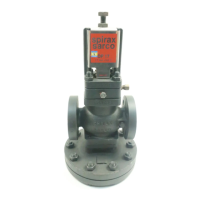
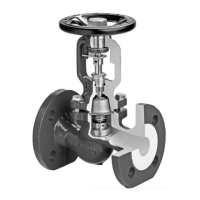

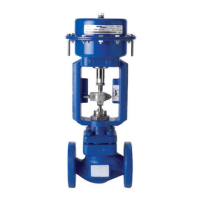
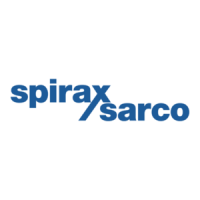
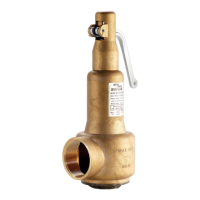


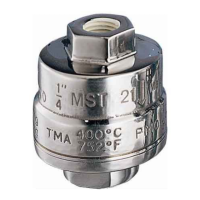


